#solarpunk in the city
Text
youtube
The YouTube upload of Season Two Episode Five is here!
On today’s episode, Ariel talks to Lindsay Jane of The Solarpunk Scene where she showcases her solarpunk life in Toronto, as well as shining a spotlight on solarpunk projects locally and internationally. Lindsay tells us about how she discovered solarpunk and the ways that she lives a solarpunk life in the city - both the upsides (gardens! architecture! effective transit!) and the downsides (sky-high rent, expensive food, difficulty cultivating outdoor gardens). She also emphasizes the importance of getting involved in your local community and politics as a city-dweller, and lets listeners in on the behind-the-scenes inspiration for The Solarpunk Scene: tune in to learn more!
#solarpunk#The Solarpunk Scene#LIndsay Jane#Solarpunk Presents Podcast#interview podcast#interview#podcast#solarpunk podcast#foraging#hopepunk#tenants' rights#creating community#solarpunk in the city#urban solarpunk#transit#toronto#toronto ontario#ontario#canadian solarpunk#solarpunk in canada#how to live a solarpunk life in the city#how to be solarpunk in the city#eating japanese knotwweed#The Cloud Gardens#Toronto Cloud Gardens#rental prices#housing prices#Youtube
18 notes
·
View notes
Text
"With “green corridors” that mimic the natural forest, the Colombian city is driving down temperatures — and could become five degrees cooler over the next few decades.
In the face of a rapidly heating planet, the City of Eternal Spring — nicknamed so thanks to its year-round temperate climate — has found a way to keep its cool.
Previously, Medellín had undergone years of rapid urban expansion, which led to a severe urban heat island effect — raising temperatures in the city to significantly higher than in the surrounding suburban and rural areas. Roads and other concrete infrastructure absorb and maintain the sun’s heat for much longer than green infrastructure.
“Medellín grew at the expense of green spaces and vegetation,” says Pilar Vargas, a forest engineer working for City Hall. “We built and built and built. There wasn’t a lot of thought about the impact on the climate. It became obvious that had to change.”
Efforts began in 2016 under Medellín’s then mayor, Federico Gutiérrez (who, after completing one term in 2019, was re-elected at the end of 2023). The city launched a new approach to its urban development — one that focused on people and plants.
The $16.3 million initiative led to the creation of 30 Green Corridors along the city’s roads and waterways, improving or producing more than 70 hectares of green space, which includes 20 kilometers of shaded routes with cycle lanes and pedestrian paths.
These plant and tree-filled spaces — which connect all sorts of green areas such as the curb strips, squares, parks, vertical gardens, sidewalks, and even some of the seven hills that surround the city — produce fresh, cooling air in the face of urban heat. The corridors are also designed to mimic a natural forest with levels of low, medium and high plants, including native and tropical plants, bamboo grasses and palm trees.
Heat-trapping infrastructure like metro stations and bridges has also been greened as part of the project and government buildings have been adorned with green roofs and vertical gardens to beat the heat. The first of those was installed at Medellín’s City Hall, where nearly 100,000 plants and 12 species span the 1,810 square meter surface.
“It’s like urban acupuncture,” says Paula Zapata, advisor for Medellín at C40 Cities, a global network of about 100 of the world’s leading mayors. “The city is making these small interventions that together act to make a big impact.”
At the launch of the project, 120,000 individual plants and 12,500 trees were added to roads and parks across the city. By 2021, the figure had reached 2.5 million plants and 880,000 trees. Each has been carefully chosen to maximize their impact.
“The technical team thought a lot about the species used. They selected endemic ones that have a functional use,” explains Zapata.
The 72 species of plants and trees selected provide food for wildlife, help biodiversity to spread and fight air pollution. A study, for example, identified Mangifera indica as the best among six plant species found in Medellín at absorbing PM2.5 pollution — particulate matter that can cause asthma, bronchitis and heart disease — and surviving in polluted areas due to its “biochemical and biological mechanisms.”
And the urban planting continues to this day.
The groundwork is carried out by 150 citizen-gardeners like Pineda, who come from disadvantaged and minority backgrounds, with the support of 15 specialized forest engineers. Pineda is now the leader of a team of seven other gardeners who attend to corridors all across the city, shifting depending on the current priorities...
“I’m completely in favor of the corridors,” says [Victoria Perez, another citizen-gardener], who grew up in a poor suburb in the city of 2.5 million people. “It really improves the quality of life here.”
Wilmar Jesus, a 48-year-old Afro-Colombian farmer on his first day of the job, is pleased about the project’s possibilities for his own future. “I want to learn more and become better,” he says. “This gives me the opportunity to advance myself.”
The project’s wider impacts are like a breath of fresh air. Medellín’s temperatures fell by 2°C in the first three years of the program, and officials expect a further decrease of 4 to 5C over the next few decades, even taking into account climate change. In turn, City Hall says this will minimize the need for energy-intensive air conditioning...
In addition, the project has had a significant impact on air pollution. Between 2016 and 2019, the level of PM2.5 fell significantly, and in turn the city’s morbidity rate from acute respiratory infections decreased from 159.8 to 95.3 per 1,000 people [Note: That means the city's rate of people getting sick with lung/throat/respiratory infections.]
There’s also been a 34.6 percent rise in cycling in the city, likely due to the new bike paths built for the project, and biodiversity studies show that wildlife is coming back — one sample of five Green Corridors identified 30 different species of butterfly.
Other cities are already taking note. Bogotá and Barranquilla have adopted similar plans, among other Colombian cities, and last year São Paulo, Brazil, the largest city in South America, began expanding its corridors after launching them in 2022.
“For sure, Green Corridors could work in many other places,” says Zapata."
-via Reasons to Be Cheerful, March 4, 2024
#colombia#brazil#urban#urban landscape#urban planning#cities#civil engineering#green architecture#green spaces#urban heat#urban heat island effect#weather#meteorology#global warming#climate change#climate hope#climate optimism#climate emergency#climate action#environment#environmental news#city architecture#bicycling#native plants#biodiversity#good news#hope#solarpunk#ecopunk#hopepunk
16K notes
·
View notes
Text
Rants at the Hairdresser
her, behind me trimming my hair: "it's so wild how big cars are. Seems a bit dangerous, ya know?"
me, enjoying the smell of the stuff she sprayed in my hair: "Yeah, apparently that's because it's cheaper to have a car classified as a 'light truck' since you can get past safety regulations and they have different frames."
her, who has paused working on my hair: "Wait, are you serious?"
me: "Yeah, apparently it's a lot cheaper for companies to do that. And it really sucks since driving one of those cars is super dangerous, but it's even more dangerous for other people, especially if they're in a smaller car. Since it would be more safe to be another driver if they ALSO have a 'light truck,' everyone is caught in a cycle of getting bigger and bigger cars. All of which are extremely dangerous and have made being a pedestrian even more dangerous."
her: deep in thought, silent.
me, happy that someone is letting me rant about this: "Oh, the new Cadillacs are the size of tanks. That's not an exaggeration, by the way."
her, stunned: ???? "what the actual hell???"
we're silent for a bit
her, hesitantly, since I look like white trash and she has at least 10 piercings and pink hair: "I feel like America has been that way for a while... ya know?"
me: "Oh yeah, I totally get what you're saying, like, putting profit over people's safety?"
her, assured now that she knows we're both too commie pilled for this kind of conversation with someone else: "Yes! Exactly! It really sucks, right?"
me: "God, tell me about it"
I was very happy with my haircut, btw. She's so good at her job. :D

#politics#us politics#world politics#lgbt#lgbtqia#lgbtq#lgbtq+#queer#green energy#5 minute cities#light truck#light trucks#hairdresser#hair salon#barber#rants at the hairdresser#solarpunk#environment#environmentalism#community building#city planning
3K notes
·
View notes
Text
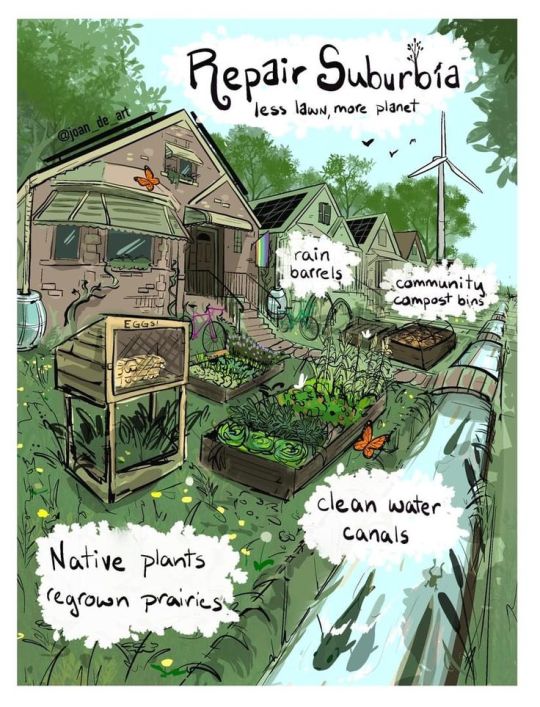
Little vision for a more beautiful, sustainable, tactile future.
2K notes
·
View notes
Text

「 A GREENER FUTURE 」 🌿
#furry#anthro#solartech#solarpunk#art#plants#city#sebastian#fursona#oc#euillcys#cinder#loke#octis#arthenos#2024#january#godbirdart#godbird#january 2024
1K notes
·
View notes
Text


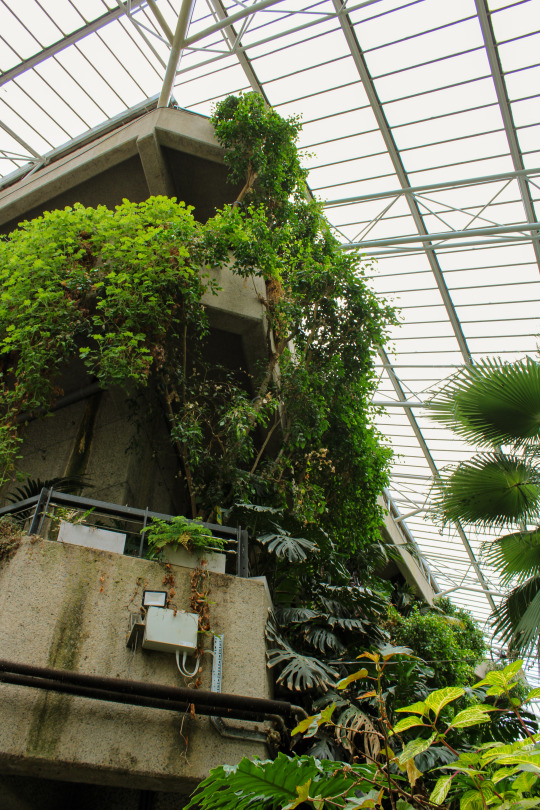
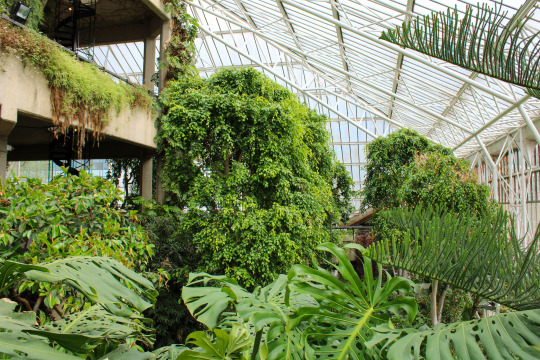
Barbican Conservatory Pt. 1
Taken 31st May 2023, Barbican Conservatory, London
#plantcore#botany#botanical#plantlife#plants#naturephotography#botanic academia#green academia#solarpunk#brutalism#indoor jungle#greenery#verdant#city garden#urban jungle#naturecore#naturelover#tree photography
4K notes
·
View notes
Text








By midmindsarts
#nestedneons#cyberpunk#cyberpunk art#cyberpunk aesthetic#art#cyberpunk artist#cyberwave#megacity#futuristic city#scifi#scifi art#scifi aesthetic#solarpunk#retrowave#ai art#thisisaiart
911 notes
·
View notes
Text
Walkable cities are nice, and I want them. I want sidewalks with that cool glow-in-the-dark pavement in them. I want busses and trains. I want the passenger trolly tracks plucked from under the roads and updated.
But I also want back roads to be paved more often. I want speed bumps around the poor neighborhoods where kids nearly get hit by people using us as a shortcut to speed through. I want the country to be more livable too, because people shouldn't be forced to move to the city just to survive.
963 notes
·
View notes
Text
I don't want street lights and advertisements lighting and blinding the skies!!! I want this-



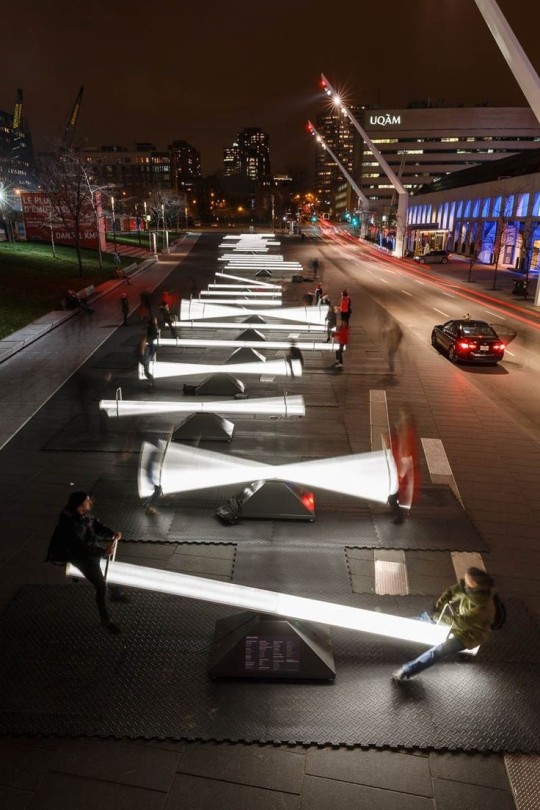






#winter#night#lunarpunk#dark sky#solarpunk#hopepunk#urban design#cities#solarpunk aes week#aes week 2023
905 notes
·
View notes
Text
Increasing the diversity of native plants in a single urban green space resulted in a sevenfold increase in the number of insect species after three years, Australian researchers have found.
According to the study’s authors, there had previously been “little empirical evidence of how specific greening actions may mitigate the detrimental effects of urbanisation”.
[...]
Researchers measured baseline insect numbers the year before greening began, when 12 indigenous plant species were introduced to the space, and subsequently conducted insect surveys for the following three years.
They identified 94 insect species in total, 91 indigenous to the Australian state of Victoria. The researchers estimated that by the final year of the study there were about 7.3 times more insect species than originally present, even though only nine plant species remained.
The team also found substantial increases in the number of predator and parasitoid insect species, which help to regulate populations of pest insects.
“These are two key groups that provide a really good ecological signal that the trophic network and all the proper interactions are happening at the site,” Mata said.
2K notes
·
View notes
Text

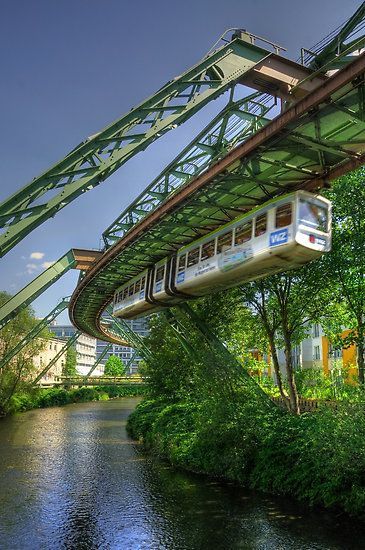
oh nothing, just daydreaming about accessible public transportation
273 notes
·
View notes
Text
"Amsterdam’s roofs have just been converted into a giant sponge that will make the city more climate resilient.
The Dutch have always been famous for their ability to control water, born out of the necessity of their homeland, much of which is below sea level.
Now, their expert water management skills are transforming the city skyline in the capital city of Amsterdam from one of terracotta tile, concrete, and shingles into green grass and brown earth.
It’s part of a new climate-resiliency trend in architecture and civic planning known as the ‘sponge city concept,’ in which a garden of water-loving plants, mosses, and soil absorbs excess rainwater before feeding it into the building for use in flushing toilets or watering plants on the ground.
If heavy rains are predicted, a smart valve system empties the stored rainwater into the municipal storm drains and sewers in advance of the weather, allowing the roof to soak up water and reduce flooding in the city.
In this way, the rooftops of buildings can be wrung out and filled up just like a sponge.
In Amsterdam, 45,000 square meters, or 11 acres of flat metropolitan rooftops have already been fitted with these systems, and the contracting firms behind the technology say they make sense in dry climates like Spain just as much as in wet climates like Amsterdam...
A 4-year project of different firms and organizations called Resilio, the resilient network for smart climate adaptive rooftops, rolled out thousands of square meters of sponge city technology into new buildings. As with many climate technologies, the costs are high upfront but tend to result in savings from several expenditures like water utilities and water damage, over a long-enough time horizon...
All together, Amsterdam’s sponge capacity is over 120,000 gallons.
“We think the concept is applicable to many urban areas around the world,” Kasper Spaan from Waternet, Amsterdam’s public water management organization, told Wired Magazine. “In the south of Europe–Italy and Spain–where there are really drought-stressed areas, there’s new attention for rainwater catchment.”
Indeed the sponge city concept comes into a different shade when installed in drought-prone regions. Waters absorbed by rooftops during heavy rains can be used for municipal purposes to reduce pressure on underground aquifers or rivers, or be sweated out under the Sun’s rays which cools the interior of the building naturally.
Additionally, if solar panels were added on top of the rooftop garden, the evaporation would keep the panels cooler, which has been shown in other projects to improve their energy generation.
“Our philosophy in the end is not that on every roof, everything is possible,” says Spaan, “but that on every roof, something is possible.”
Matt Simon, reporting on the Resilio project for Wired, said succinctly that perhaps science fiction authors have missed the mark when it came to envisioning the city of the future, and that rather than being a glittering metropolis of glass, metal, and marble as smooth as a pannacotta, it will look an awful lot more like an enormous sculpture garden."
-via Good News Network, May 15, 2024
#amsterdam#netherlands#green roof#blue roof#city planning#urban#urban landscape#flood#climate change#climate action#climate emergency#climate hope#solarpunk#hope posting#go green#eco friendly#climate adaptation#sponge city#urban planning#good news#hope#rooftop garden
2K notes
·
View notes
Text
Electric buses and electric trains electric buses and electric train’s electric buses and electric trains eleCTRIC BUSES AND ELECTRIC TRAINS ELECTRIC BUSES AND ELECTRIC TRAINS ELECTRIC BUSES AND ELECTRIC TRAINS ELECTRIC BUSES AND ELECTRIC TRAINS
ELECTRIC BUSES AND ELECTRIC TRAINS!!!!!!!!!!!!!!!!
#solarpunk#public transportation#bus#train#electric buses#electric train#electric vehicles#AND NOT ONLY ARE THEY ELECTRIC BUSES AND ELECTRIC TRAINS#BUT THEY ARE CHARGED THROUGH ELECTRICITY GAINED BY RENEWABLE ENERGY#BUT SERIOUSLY COME ON WE NEED MORE PUBLIC TRANSPORTATION#THAT IS NOT RUN ON FOSSIL FULES#YOU!#YEAH YOU!#GO SEE WHO YOU NEED TO TALK TO IN ORDER TO GET SOME OF THAT IN YOUR CITY#MAYBE CITY HALL
444 notes
·
View notes
Text

#city planning#permaculture#solarpunk#walkable cities#decentralization#housing crisis#sacrifices must be made
1K notes
·
View notes
Text

「 BRIGHTER FUTURE 」 💡
portrait commission for @zaneclodon
#zaneclodon#zane#furry#anthro#furry art#godbirdart#godbird#commissions#2024#september 2024#art#solarpunk#solartech#plants#city
422 notes
·
View notes
Text
reminder that fighting for climate solutions means fighting for public health.
switching to clean energy means less air pollution and significantly less deaths associated with fossil fuel extraction
green, localized, and walkable neighborhoods with accessible transport is good for physical, mental, social, and emotional health
cutting down the beef and dairy industries and eating more plant based (for those who can) is better for health of individuals
fighting for unionized labor in good, clean jobs means less stress in people's daily lives which leads to less stress-related illness and injury
Fight for your neighbors, fight for the planet
#solarpunk#sustainability#climate change#climate crisis#activism#walkable communities#walkable cities#plant based#clean energy
526 notes
·
View notes